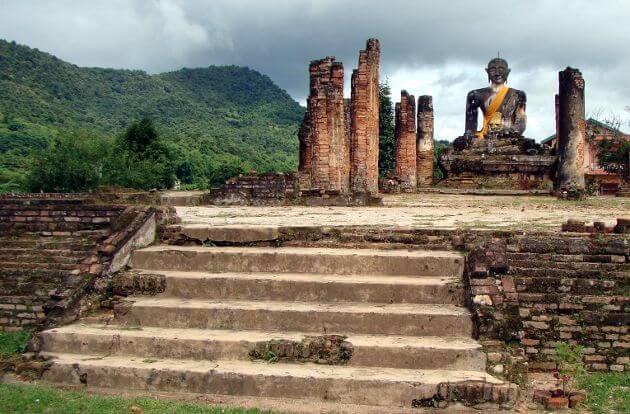
Xieng Khouang is a province of Laos, borders with Nghe An province of Vietnam to the east and with Vientiane to the south. Xieng Khouang is a relatively large plateau. This plateau is located at an altitude of 1,500 - 2,000m, has cool climate all year round. This place has a strange peaceful beauty. If visitors know its history, they will be very astonished by the optimism of people here. During Indochina war against US imperialism, Xieng Khouang is one of the provinces which suffered a huge amount of bombs attacked. After the liberation this province is victim of hoodlums. Despite of many difficulties and hardships, Xieng Khouang today is growing rapidly, especially tourism. From Luang Prabang to Xieng Khouang, visitors must travel on Road 13, also known as Royal Road. On this road, visitors can contemplate peaceful landscape of this plateau. The rolling hills are covered lush green smooth grass, adorned with ravishing natural pine forest. The slender wooden fence runs interlayer romantic hills make this land as suburban famous cities of Europe. Far away, each pair of horses leisurely grazes under the pine trees. For any visitors, this place is really ideal to relax and having unforgettable moments.